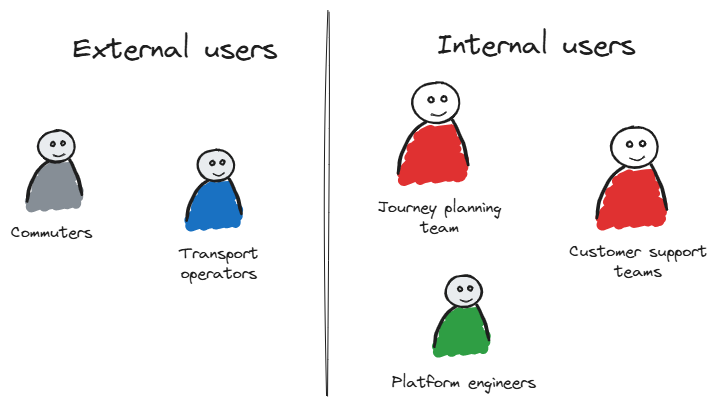Step 2: Identifying Users

Why identifying users matters
Once the purpose of your User Needs Mapping session is clear, the next step is understanding who your users are. Without knowing the individuals or groups you serve, it’s impossible to define meaningful needs or align your organization’s capabilities effectively. Identifying users ensures your mapping efforts remain grounded in real-world contexts and priorities.
Key Actions
- Identify external users: Focus on customers or stakeholders who directly engage with your product or service.
- Identify internal users: Include teams within your organization—such as platform engineers, support teams, and marketing—who are crucial to delivering value.
- Group users: Organize users into clear groups based on roles, behaviors, or shared needs.
Tools and Techniques
- User Personas: Create detailed profiles that outline key attributes of your user groups, such as their goals, challenges, and motivations.
- Empathy Maps: Explore what users think, feel, say, and do to better understand their perspectives.
- Stakeholder Interviews: Conduct short interviews to capture user expectations, pain points, and workflows.
Practical Example
Scenario: A mobile ticketing company like Passenger might identify the following user groups:
- External Users:
- Commuters who purchase tickets.
- Transport operators who require scheduling tools.
- Internal Users:
- Customer support teams assisting with ticketing issues.
- Platform engineers maintaining the ticketing infrastructure.
By organizing these groups, the company can gain a comprehensive understanding of the diverse needs and challenges across its user base.
Exercise
Take a few minutes to list your own user groups. Consider both external and internal users. For each group, note:
- Who they are: Their roles and context.
- What they do: Their goals or interactions with your product or service.
- What they need: High-level expectations or challenges.
What’s Next?
With your user groups clearly identified, you’re ready to define their specific needs.
Proceed to Step 3: Defining User Needs
Need help to get things moving?
If you are looking for help to get started, please do not hesitate to reach out.
Reach out to us